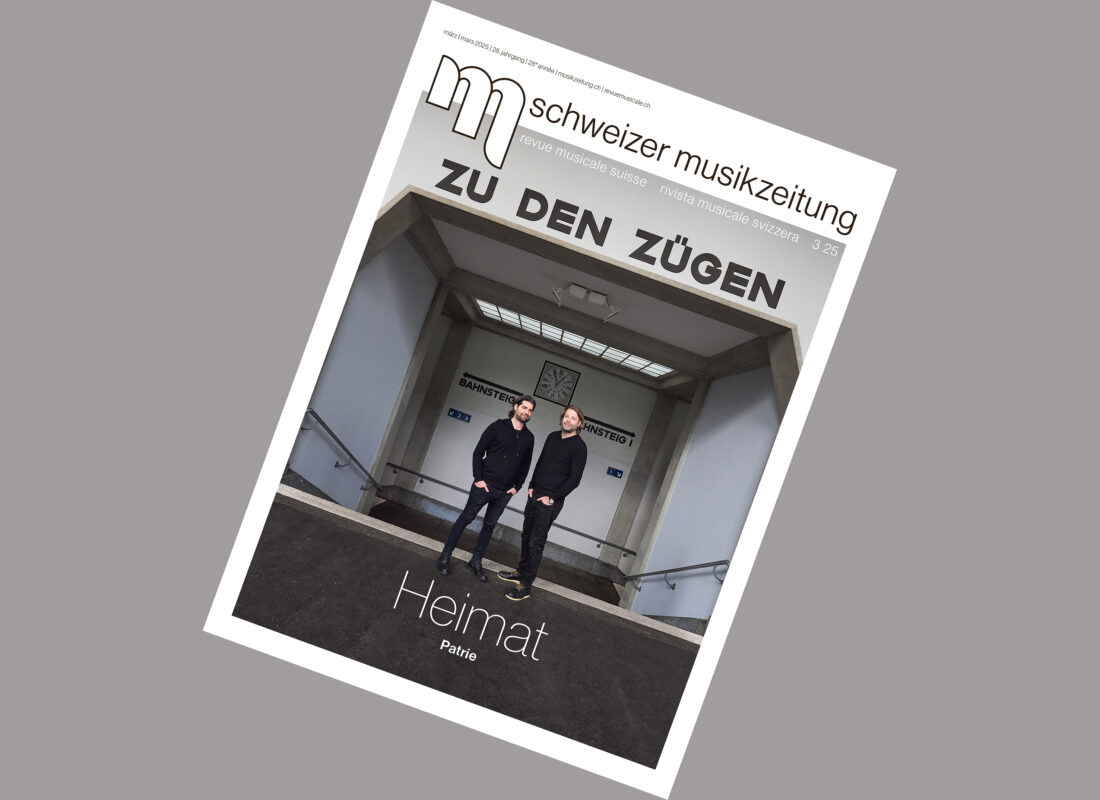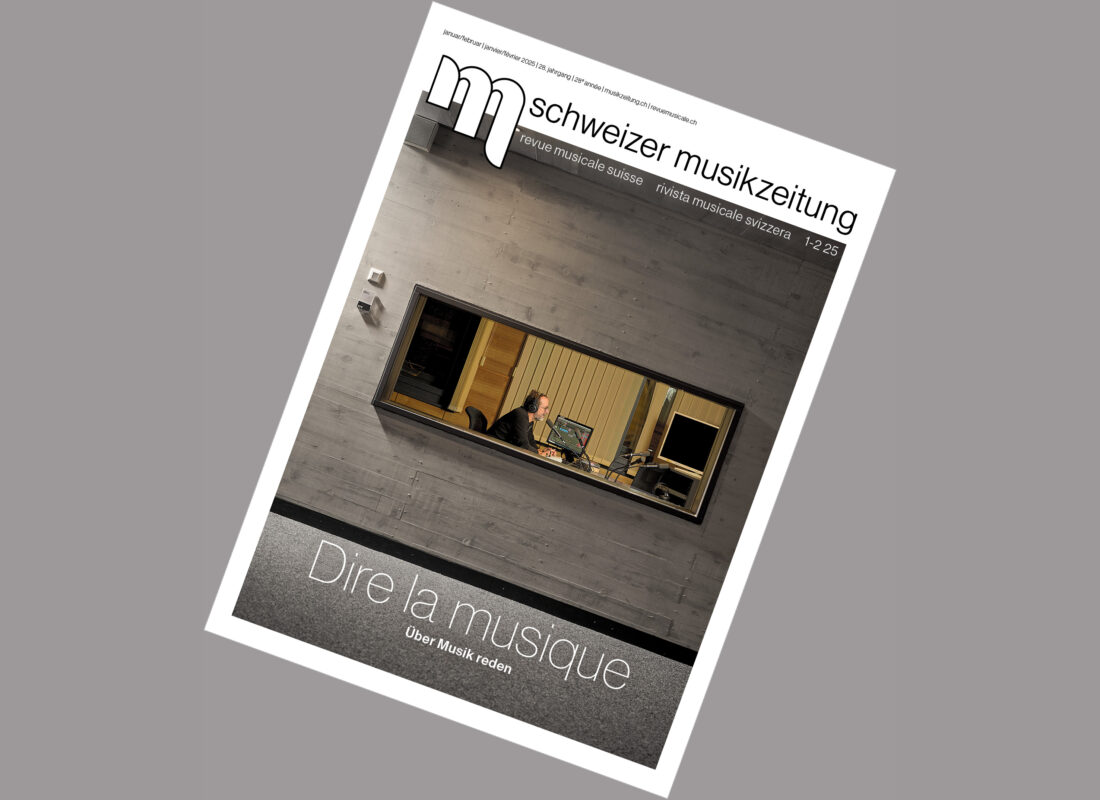"A dream come true for Brazil"
The Orquestra Sinfônica do Estado de São Paulo, or OSESP for short, has big plans: If it is one of the leading orchestras in Latin America today, it wants to play among the best in the world. With the American chief conductor Marin Alsop in office since 2012, it could succeed. A visit to an orchestra with vision.


The Orquestra Sinfônica do Estado de São Paulo, or OSESP for short, has big plans: If it is one of the leading orchestras in Latin America today, it wants to play among the best in the world. With the American chief conductor Marin Alsop in office since 2012, it could succeed. A visit to an orchestra with vision.
You can't escape São Paulo. It's a fierce city, skyscrapers towering mightily into the sky, everywhere and all the time there are crowds and traffic jams. And it is never quiet in São Paulo. Engines roar in front of the red lights, motorcycles honk and overtake at breakneck speed, and on Rua 25 de Março, shouting traders sell their wares. And then there's the music. Lots of music. On the Praça da Sé, homeless people dance to poor quality pop music, in a busy alleyway a man with a guitar plays Brazilian pop songs. But there are other sounds too. Such as that of the symphony orchestra.

- Foyer of the concert hall
A train station as a concert hall
In the middle of the hustle and bustle, in a beautiful old station building on Praça Julio Prestes, lies the OSESP concert hall. It is a haven of peace in "Zombieland", as the area around the hall is called by the inhabitants of São Paulo, the Paulistas - because of the many drug addicts who hang around the building. In between, people hurry home, cars honk and an emaciated man pushes a shopping cart filled with pineapples and huge watermelons past. Nobody lingers here. Inside, however, the atmosphere is completely different, here you have space and peace to breathe. And to make music. A concert hall with excellent acoustics has been created in the winter garden of the former train station - thanks to a ceiling that is one hundred percent movable. The audience, orchestra and chief conductor Alsop are delighted with the concert hall, which was opened in 1999 as the "Sala São Paulo" and gave the orchestra a home.

- Grant Leighton
- Marin Alsop
High goals for a young orchestra
It had already been around for some time. Founded in 1954, it underwent fundamental changes in recent years. The long-standing, allegedly tyrannical, but also very valuable chief conductor John Neschling was dismissed and a number of things were restructured. After a transitional phase, the American Marin Alsop for the OSESP, who is also principal conductor of the Baltimore Symphony Orchestra. In addition to Alsop, the orchestra owes its new direction to two men in particular: Artistic Director Arthur Nestrovski and Executive Director Marcelo Lopes. The two directors, both originally trained as musicians, are at work with a great deal of Brazilian passion and innovative energy. And they have big plans: "I don't think it's unreasonable to hope that the São Paulo Symphony Orchestra will one day come to mind for everyone who thinks of the world's leading and most exciting orchestras." The fact that this does not seem completely megalomaniacal is also due to Arthur Nestrovski's eloquent and modest manner. He is well aware that a lot of time and energy will be needed before that day arrives, but he believes the basic requirements are in place: "The orchestra consistently - and consistently is the most important word here - performs at a very high level."
Enthusiasm and optimism
So the potential for growth is there, but there is still a lot to do - the hopes placed in Marin Alsop are correspondingly high. It's good that she herself is also enthusiastic about the orchestra: "The orchestra is growing musically and is so enthusiastic. I see it as an orchestra with real depth and temperament and I'm trying to build on that." This enthusiasm on the part of the orchestra musicians, the desire to play and improve, were also the main reasons for Alsop to come to São Paulo. In any case, she likes the Brazilian mentality, which is also reflected in her work with the orchestra: "It's all about the future here, about opportunities. The mentality is very optimistic and warm." You can certainly feel this in the rehearsals and in the concert. Especially with the piece The rescued Alberich for solo percussion and orchestra by Christopher Rouse, all participants demonstrate their skills: Alsop with her gesturally broad, yet pointed conducting style, the soloist Colin Currie with full physical commitment and rhythmically precise percussion fireworks and the orchestra with its interplay of romantic, opulent devotion and restrained, magical accompaniment.
Rooted in society

- 120,000 children visit the educational programs every year
Europe as an opportunity, Brazil behind us
In the fall, the OSESP will also be able to showcase its enthusiasm in Europe - an important step towards raising its international profile. Executive Director Lopes even sees the OSESP's fifth European tour as a "turning point, even a milestone, in terms of international appeal." With the Salle Pleyel in Paris, the Vienna Konzerthaus and the Berlin Philharmonie, the program includes prestigious venues that have never hosted a professional Latin American orchestra before. What is possible for the orchestra today would have been unthinkable 10 years ago: "We are a dream come true for the country," says Lopes. This is precisely why it is important to both directors to be both role models and motivators for cultural institutions in Brazil. To show what is actually possible in this country.
Because before international recognition comes national recognition. The very next goal is to make the orchestra known throughout Brazil: "We want to be a part of what Brazil is." This rootedness in society is so important because, as Marcelo Lopes says, you can only take care of the international level when the social relevance in your own country is given: "A cultural project must be relevant to society."
More popular than soccer?
Being relevant for Brazil means being there for the population, as 52% of the budget is borne by the public sector, the state of São Paulo. "We have to work at the highest possible level and at the same time not lose touch with the society we come from," is Nestrovski's credo. As a result, the elitist character that was still attached to classical music 20 years ago is gradually disappearing. The audience has also changed in these 20 years, both in terms of age and class - and further investment is to be made in this change. The digital concert broadcasting capacities are currently being expanded, free concerts are held every Sunday and the orchestra keeps going out to the people. For example, it played a concert on Santos beach near São Paulo in front of an audience of 10,000: "It's a different way of engaging with society," says Nestrovski. This also includes the mediation programs: More than 120,000 children and teenagers, mainly from public schools, which are frowned upon in Brazil, visit the concert hall every year. Then the seemingly stoic hall fills with noise, cheerful laughter and smiling faces. Lopes suspects that for these reasons the orchestra has never been exposed to the kind of protests from the population that have recently hit the World Cup, for example.

- Takashi Matsuzaki
- Clarice Assad
Clarice Assad - ever heard of her?
This may come as a surprise, as football seems to be almost sacred in Brazil. Apparently, Brazilians really love the orchestra. And they are interested in contemporary music: "We have the advantage and the disadvantage of not having as great a tradition as the European countries. So people are more open to sounds they are not used to." If you leaf through the OSESP's seasonal program, you will find many contemporary Brazilian composers who are often completely unknown in Europe or North America - the classical music of their own country is intensively promoted. Each season, the orchestra commissions at least six works from Brazilian composers. Nestrovski says: "If we want to be connected with the world we live in, with society, with Brazil, we have to have a connection with the music that is written here. We are not just a museum." And he adds pragmatically: "If we don't play it, who will play it?" These six commissioned works, as well as older Brazilian music and new editions of Villa-Lobos' compositions, are also published by the in-house publishing house - with the aim of ensuring that classical Brazilian music is accessible to all orchestras around the world and is therefore also played. A beautiful utopia or a realistic goal? Chief conductor Marin Alsop is certainly enchanted - she loves conducting Brazilian music, which is mostly unknown even to her: "It's really fun to discover a whole new musical world." European audiences will get a taste of this in the fall when, alongside Beethoven and Mahler, a piece by the young Brazilian composer Clarice Assad is on the program. Will she take the hearts of the Swiss by storm? To be continued!
Rebekka Meyer was invited by the orchestra to São Paulo at the end of August. In Switzerland, the OSESP will perform under the direction of Marin Alsop and with pianist Nelson Freire on October 12, 2013 at the Victoria Hall in Geneva and on October 13, 2013 at the Zurich Tonhalle.









